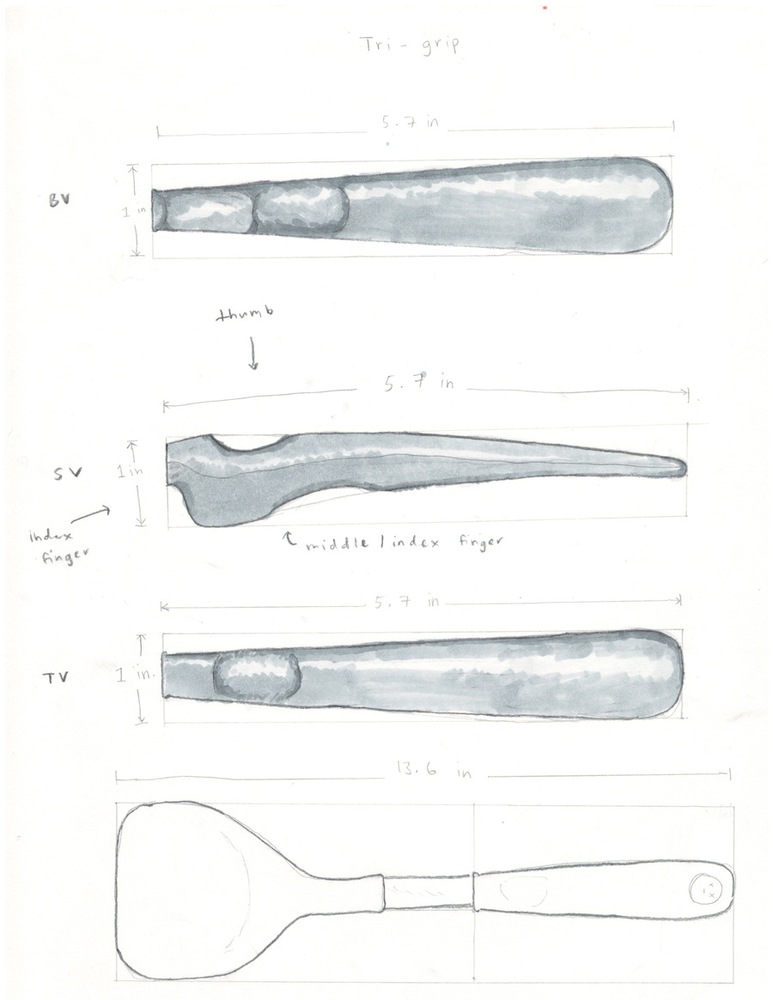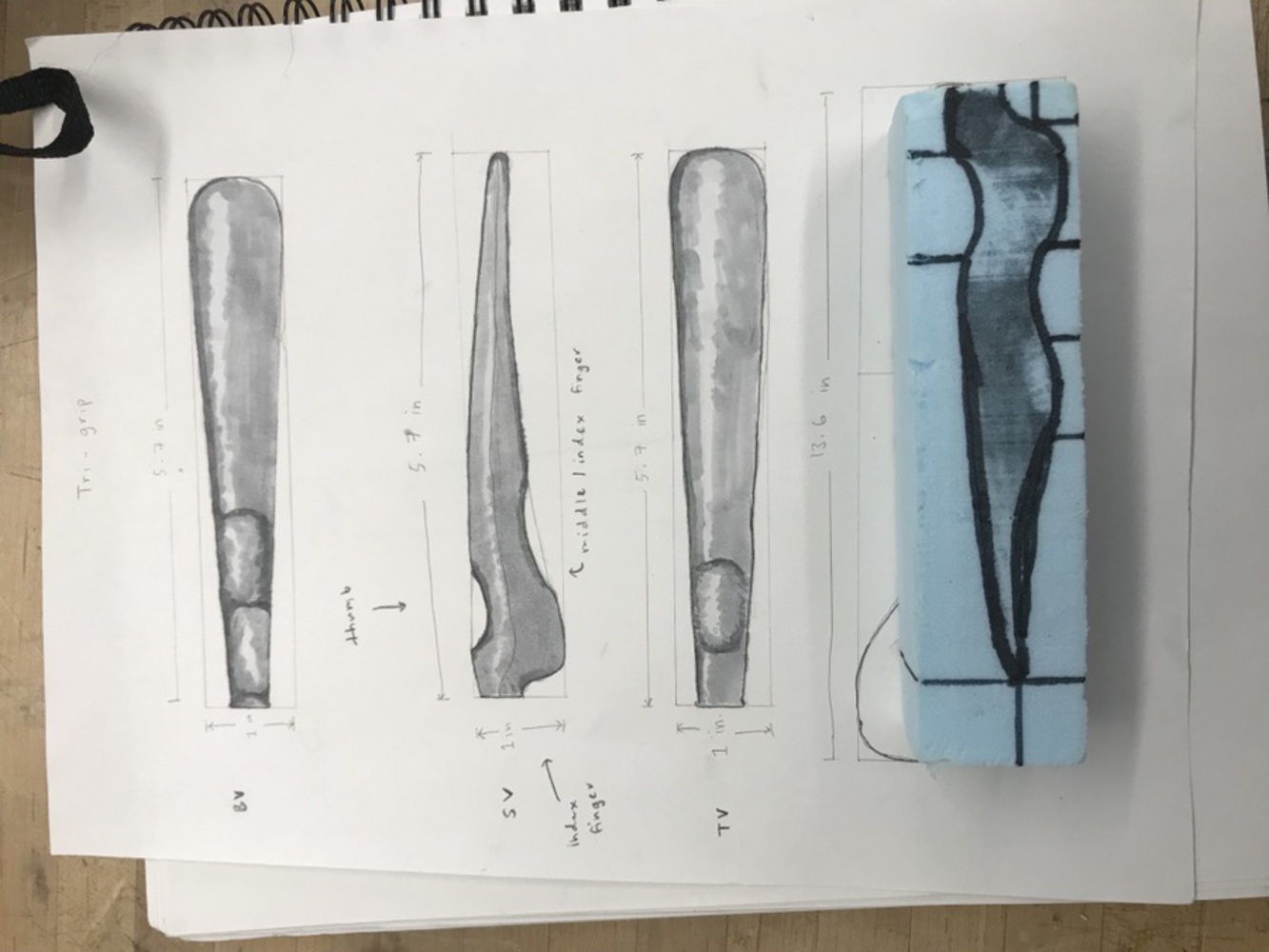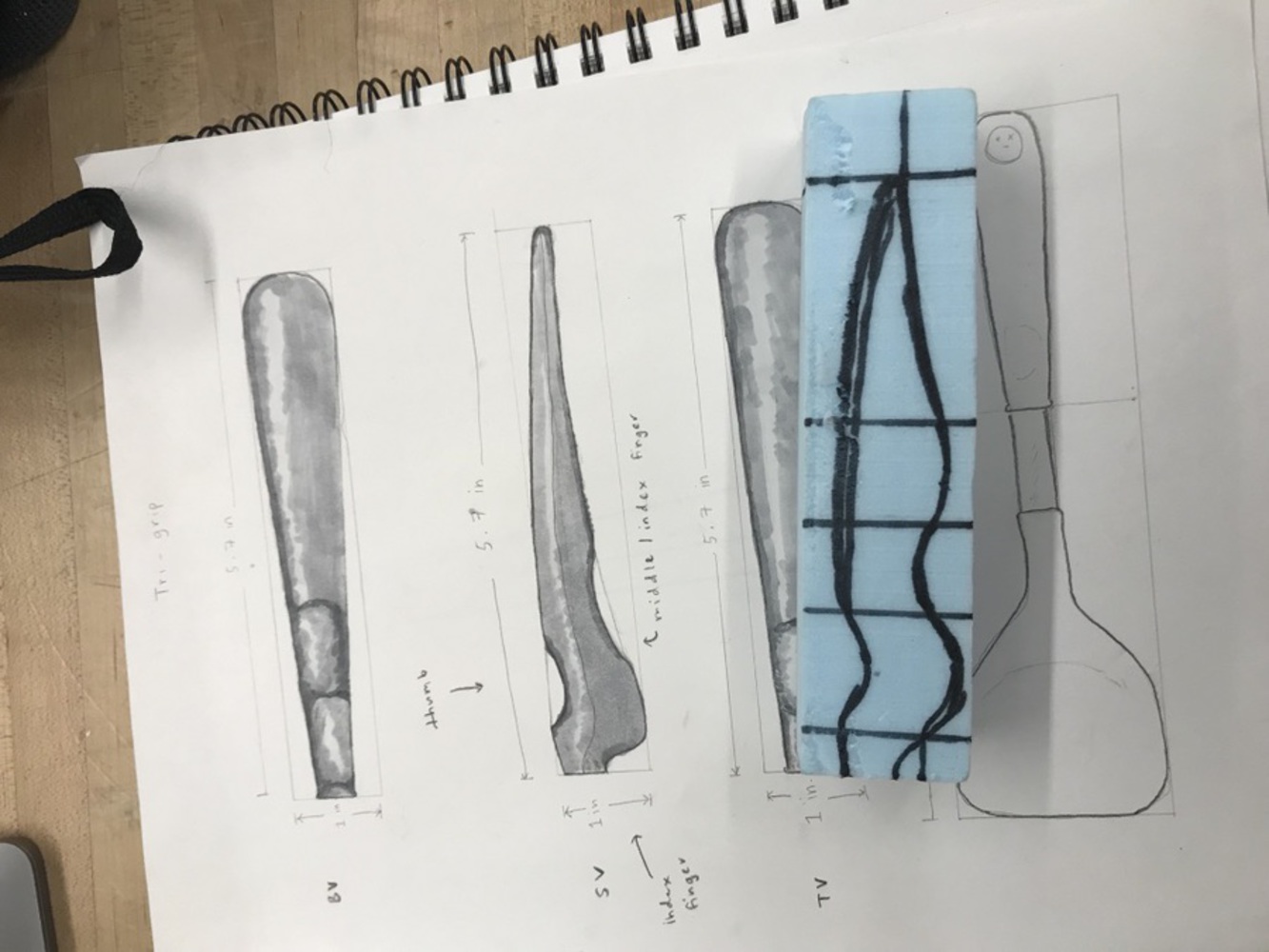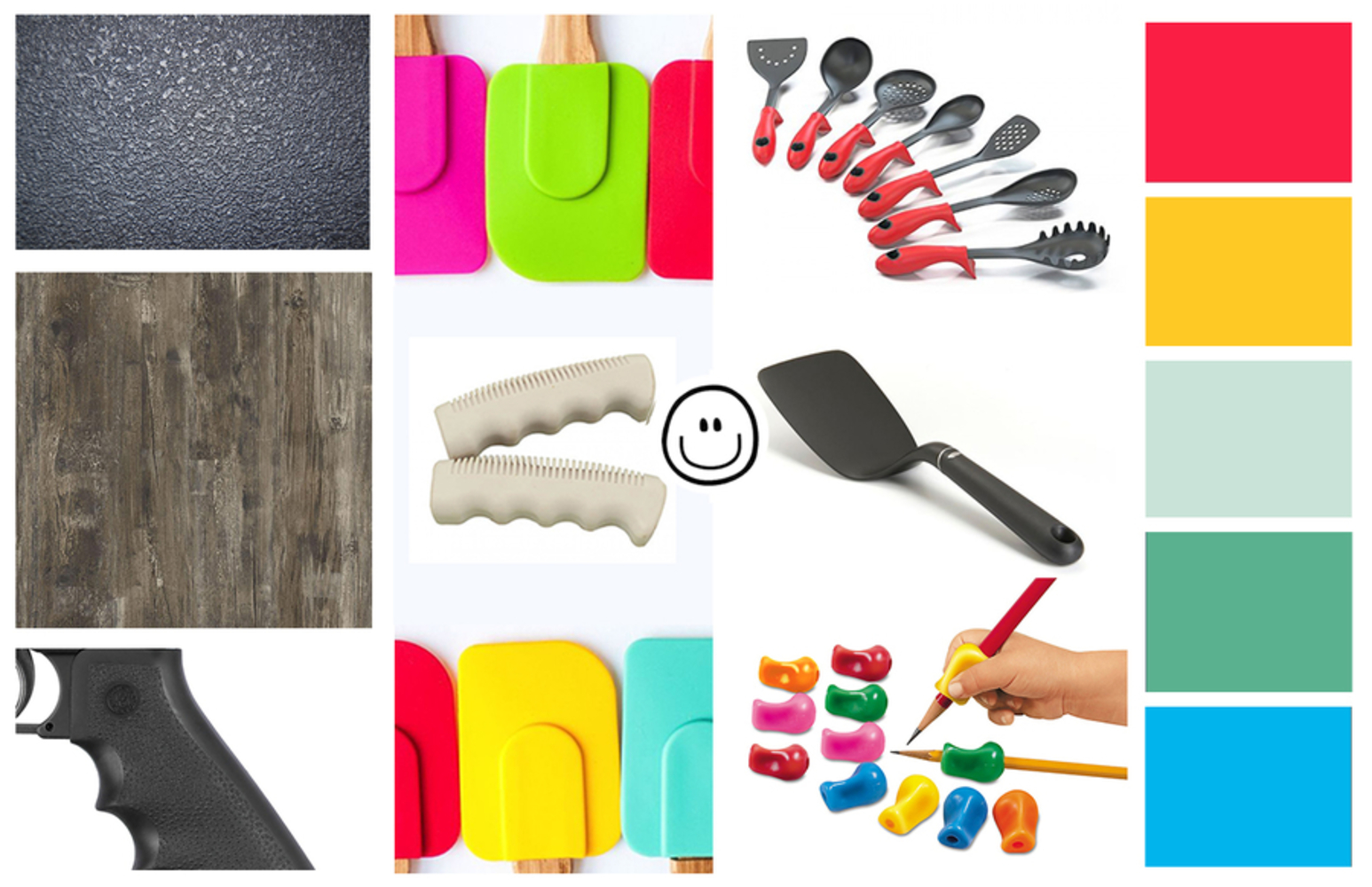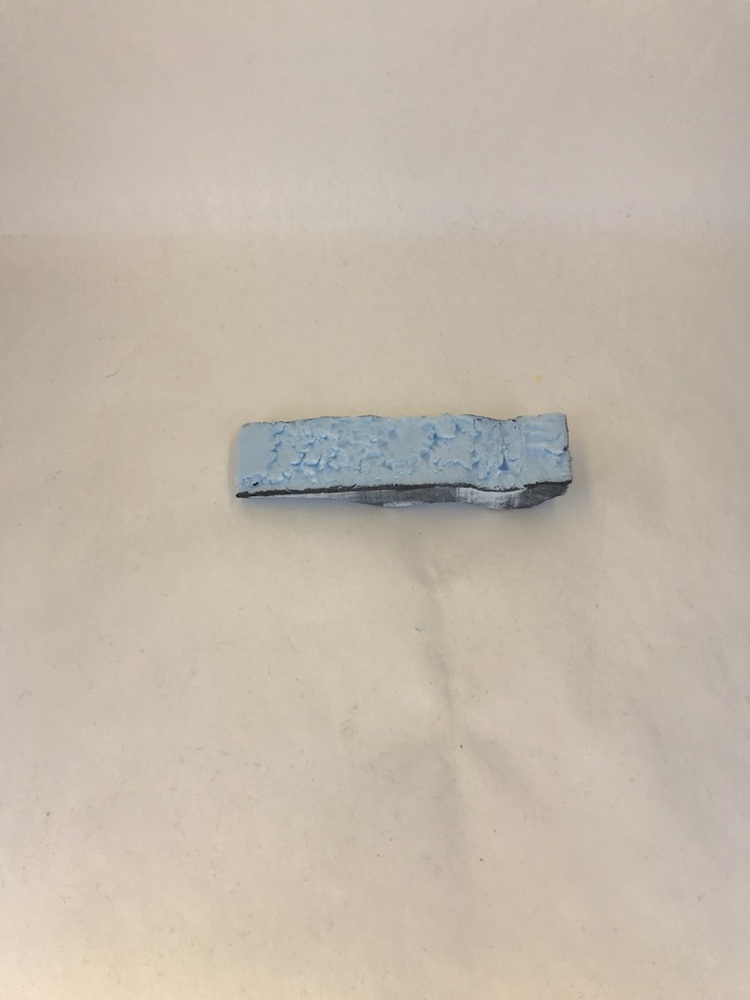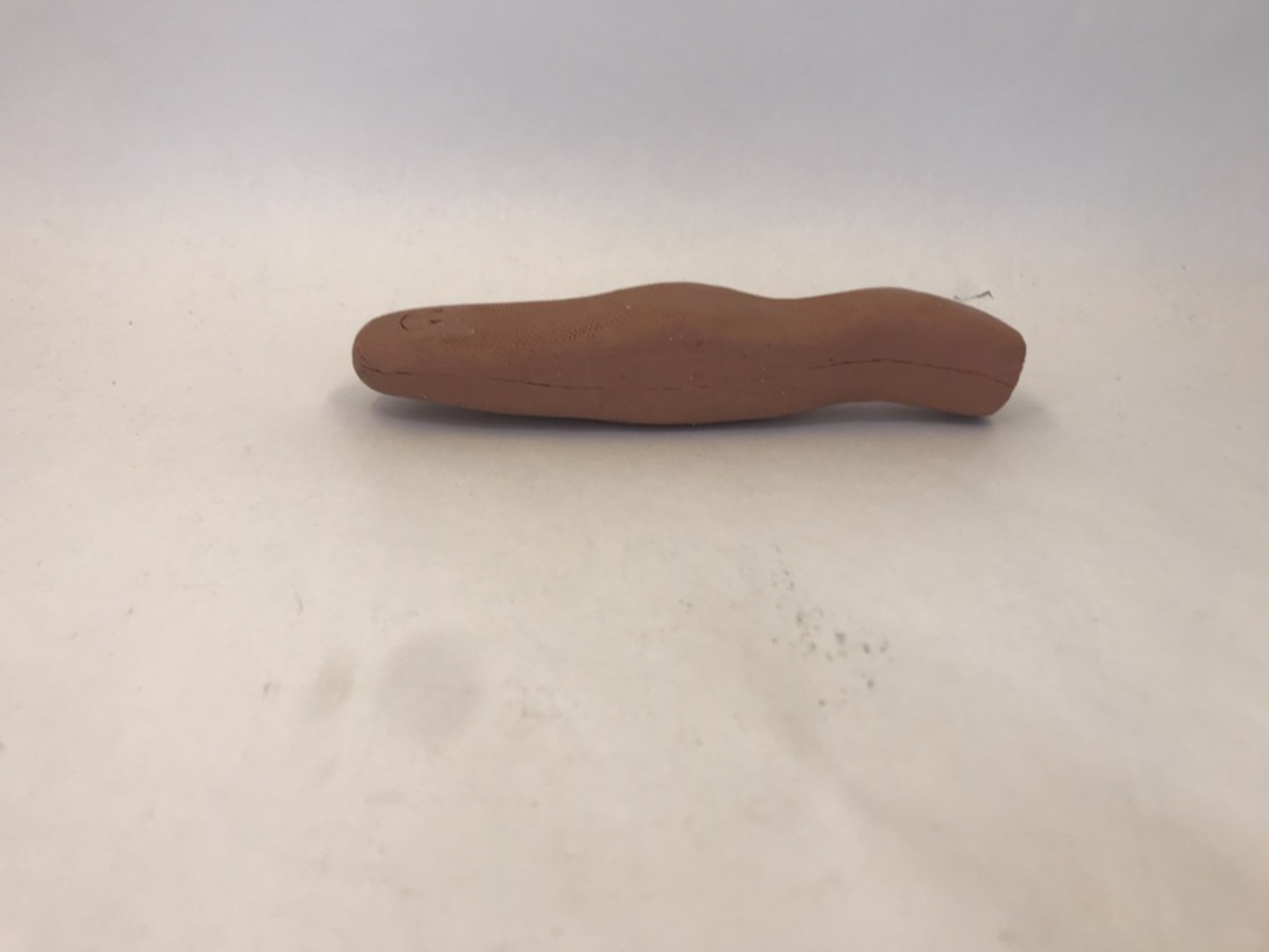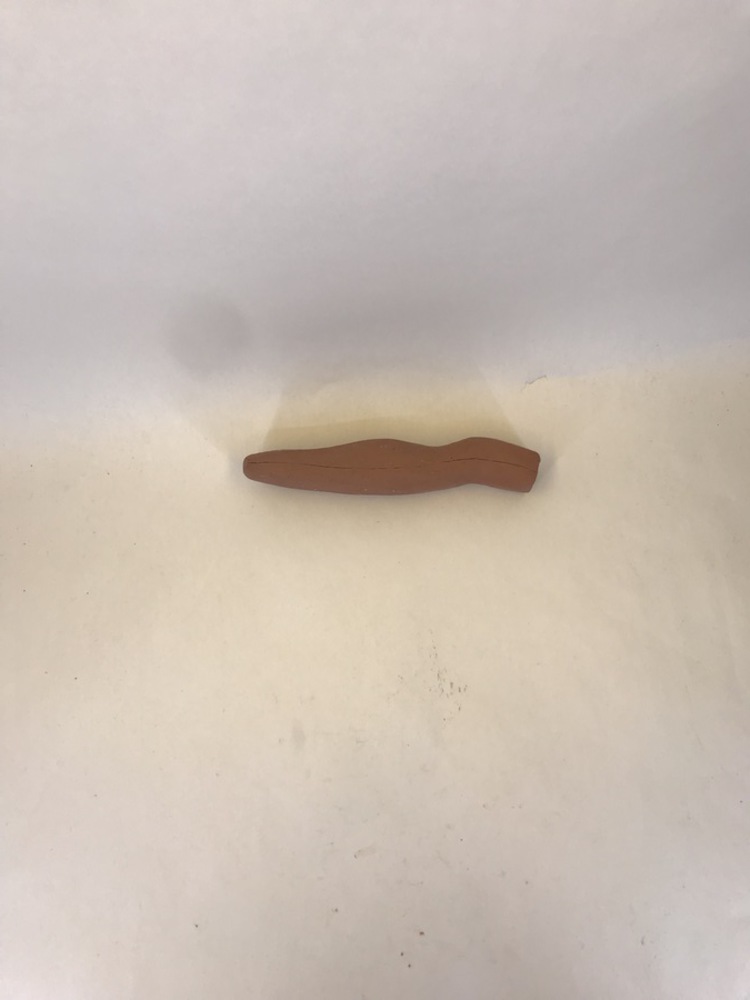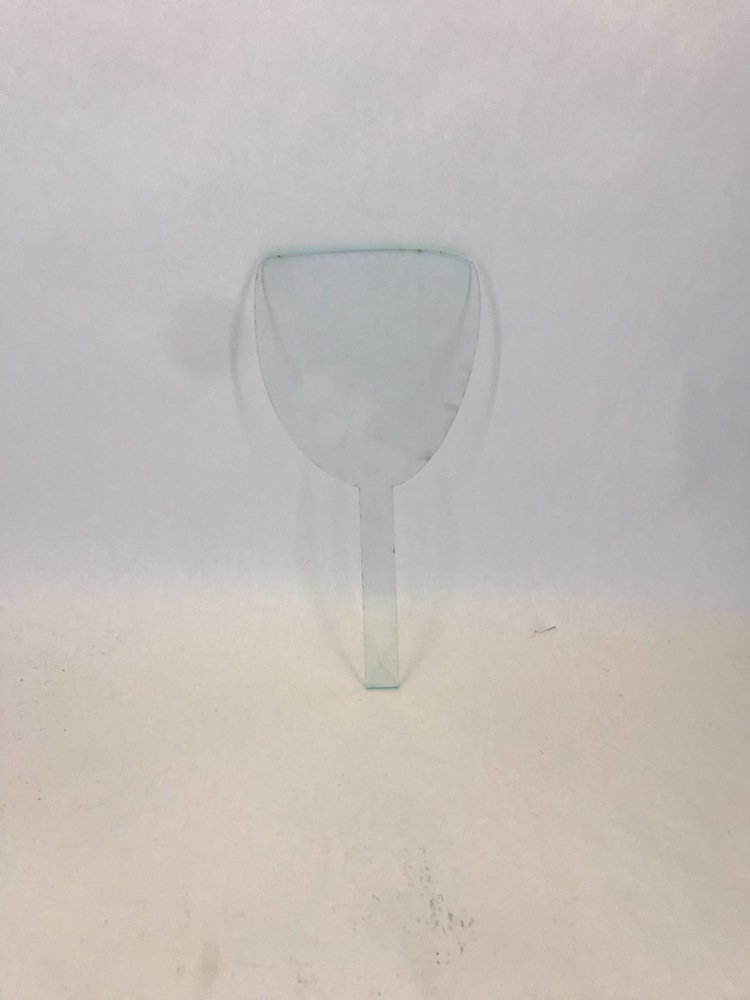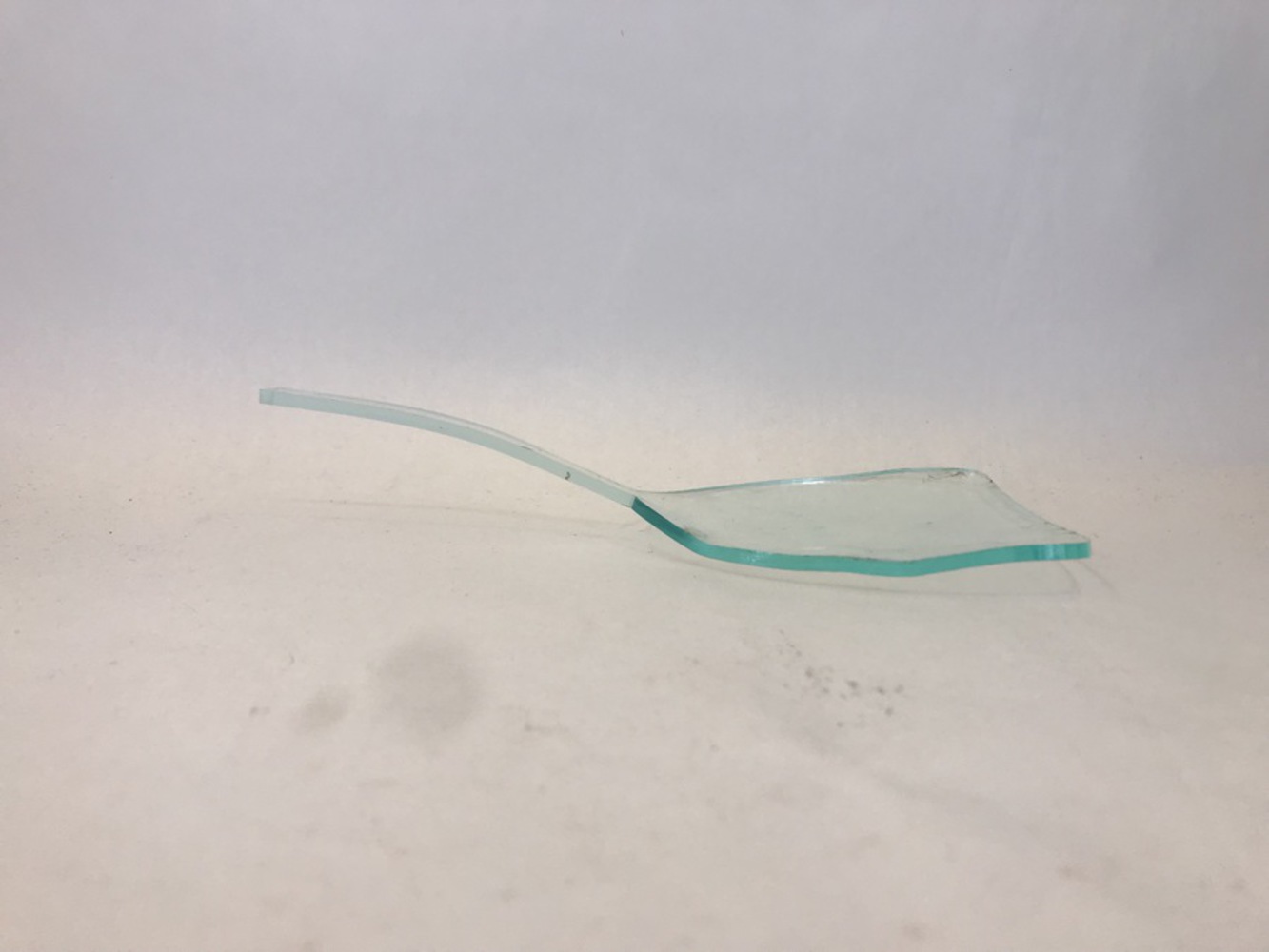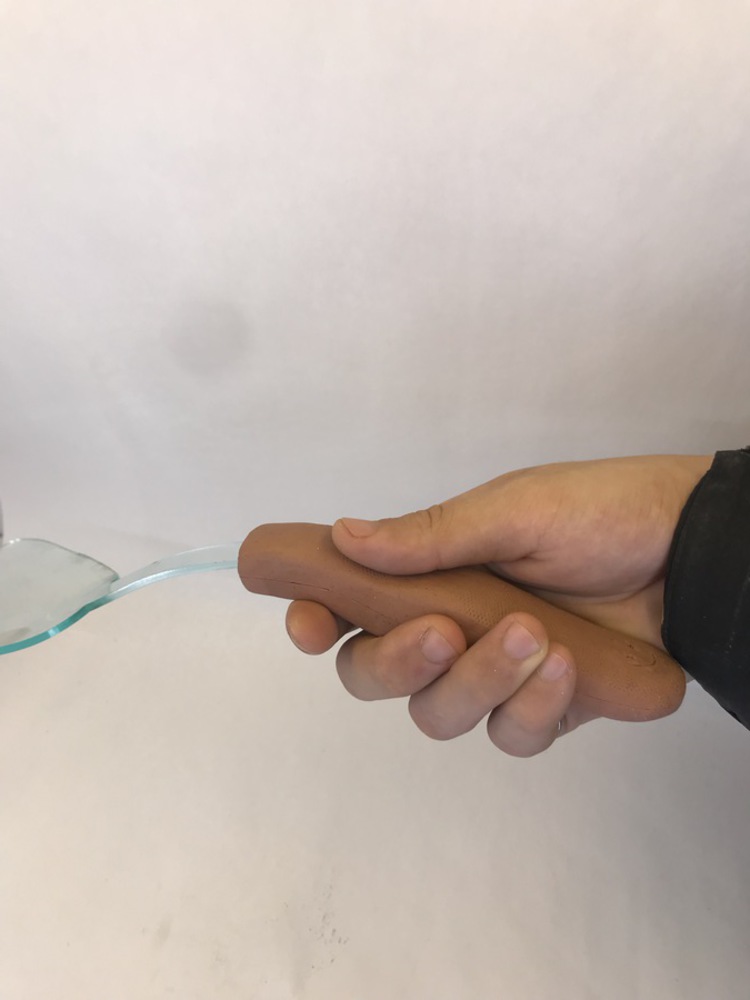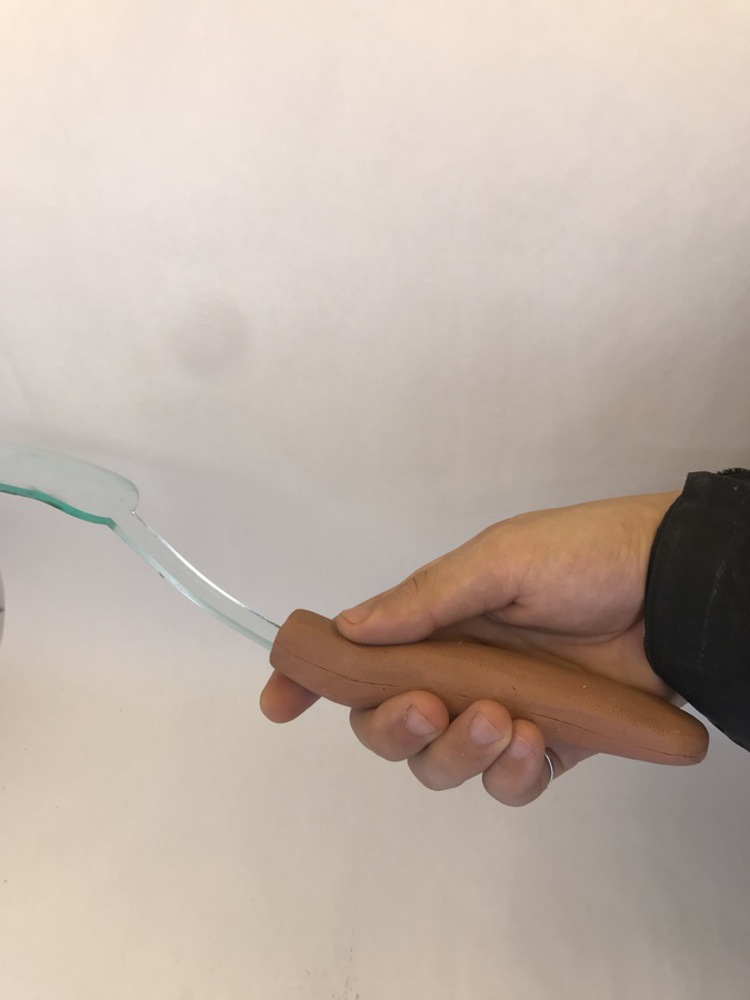Process
In order to produce my final cooking-spin design, I had to look through a few options first. There were many grips to think of, using most on a daily basis, but there were very few grips that I could confidently say I felt uncomfortable using, so I turned towards an item that I didn't have a problem with per se, but could be happier using: my cooking-spoon.
I used the spoon for many things (i.e. cooking ingredients in a pan or foods with sauces), and I noticed that the way I gripped the spoon handle made that entirely possible. However, there were no design-centric tutorial for people picking up the spoon for the first time to see that it could be a multi-faceted tool. I created a sketch of the tri-grip, which can be held in at least three different ways. To bring my idea to life, I used high-density foam core as a solid base in the general shape of the grip, and then shaped the clay around it. After finishing touches on the grip, I used a laser cutter to create a replica of the spoon's neck and head and attached it to the grip.
